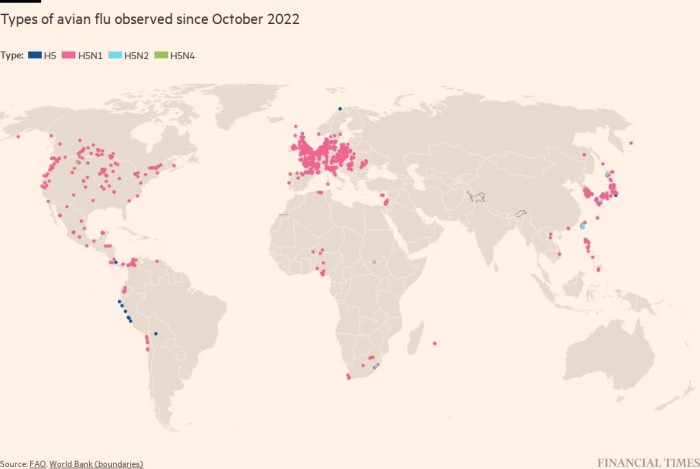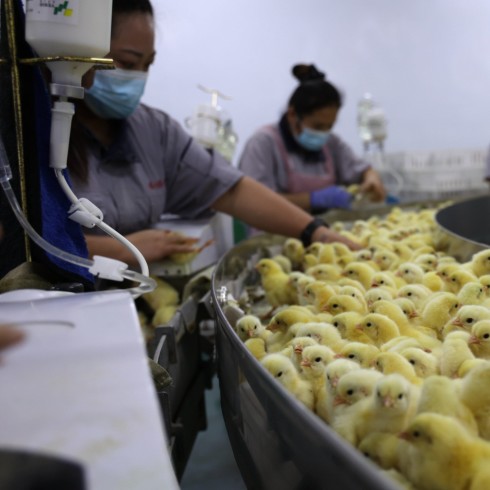How likely is a human bird flu pandemic?
The worst-ever outbreak of bird flu has led to the disease becoming endemic in some birds, inflicted huge costs on the poultry industry, spread into wild and captive mammals and, in some rare instances, infected humans.
The World Organisation for Animal Health this month said a rising number of cases had been reported in mammals, “causing morbidity and mortality” in species such as otters and seals. Reports of infections in farmed mink in Spain had increased concerns, WOAH said, because cases involving large numbers of animals kept close to one another exacerbated the risk of wider transmission.
If H5N1, the strain mainly responsible for the latest outbreak from late 2021, develops mutations that make it easier to transmit to humans, experts fear the emergence of a pandemic that carries more risks for global health than the Covid-19 outbreak. Though bird flu has infected relatively few humans, its fatality rate is about 50 per cent, according to the European Centre for Disease Prevention and Control.

And what other measures should be taken?
Richard Ebright, professor of chemistry and chemical biology at Rutgers University, said it was “clear” that further measures should be taken to reduce the zoonotic potential of H5N1.
He urged an end to two activities that could enable avian influenza viruses to make the jump to humans — fur farming and gain-of-function research, in which pathogens are manipulated to help scientists understand how they behave.

“The former, in effect, selectively breeds for new H5N1 influenza viruses that can transmit efficiently in mammals,” Ebright said. “The latter, by definition, deliberately creates new H5N1 influenza viruses reasonably anticipated to transmit efficiently in mammals.”
“Both are unnatural. Neither offers benefits that offset the risks,” he added.
What counter-measures are available?
According to the WHO, vaccines for use in humans against H5N1 infection have been developed, but have not been widely used.
“Several manufacturers have developed prototype H5 vaccines that can be authorised when and if a pandemic H5N1 strain emerges,” it said, adding the most important tool was the identification of positive cases and the monitoring of their contacts as part of routine outbreak investigations. Influenza antivirals are also available.
Only a handful of countries such as Russia, China and Egypt have vaccinated animals against avian flu in the past three years, according to WOAH. But with vaccines unable to offer immunity or complete protection against disease, many experts say the safest measure is the separation of sick and healthy animals.
To protect humans in the long term, Farrar advocates building up a global reserve of vaccines “for every single strain of influenza that exists in the animal kingdom through at least phase 1 and phase 2 studies [in humans], so that you know the vaccines are safe and immunogenic and that you could manufacture them well”.
Video: Battling the avian flu epidemic | FT Food RevolutionThis story originally appeared on: Financial Times - Author:Donato Paolo Mancini




























